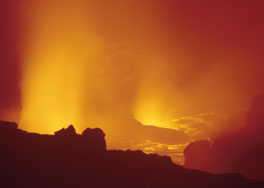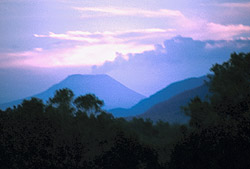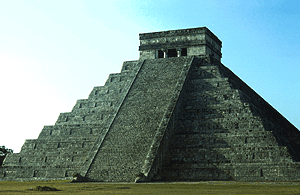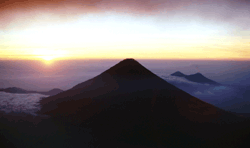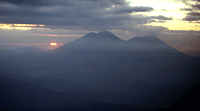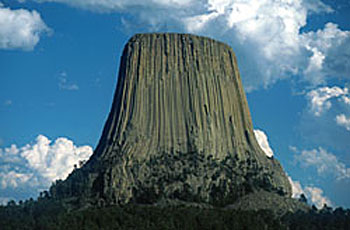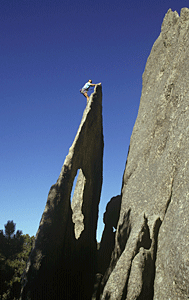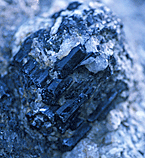|
|
After Bruce's first Africa trip, and Tass's first trip to South America, we meet as ski bums in Jackson, Wyoming in 1976. To see photos of our tipi in Jackson click on About Bruce and Tass. |
|
Besides birding and learning about rainforest, we are excited to learn about the Maya Indians.
The Maya built huge cities and pyramids throughout Mexico and Central America. The pyramid of Kukulcan at the right is in Chichen Itza, Mexico, on the Yucatan peninsula. |
|
We travel into the highlands of Guatemala and stay for six weeks on the shores of Lake Atitlan, which is surrounded by volcanoes.
As the sun sets we plan which of the volcanoes we will climb first. |
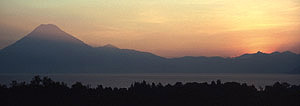 |
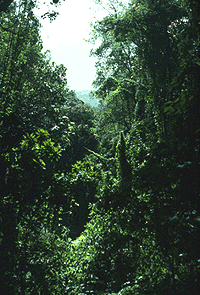 |
The base of the Atitlan volcano is covered with thick tropical rainforest. During most of the climb we are in mist and rain. As we climb we ascend through the tropical rainforest into cooler temperatures and a band of pine forest. Hiking higher we go above tree line onto a huge scree field of lapilli, marble sized rocks formed when lava was blown into the air and then separated into droplets, which cooled off into rocks as they fell back to earth. |
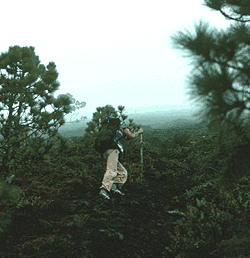 |
|
|
|
After two days of climbing we arrive on top of Acatenango.
The view of Fuego is even better than we had hoped. We take off our backpacks and sit down to watch. About every twenty minutes the ground shakes and we see a huge puff of smoke rise out of the volcano. Only as the plume of ash begins to billow does the sound of the explosion reach us. |
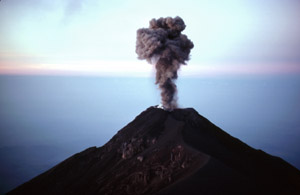 |
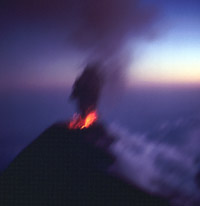 |
As the sun goes down we realize that each explosion is accompanied by a large shower of lava and hot rock that we could not see in the bright daylight.
We know we are in for a beautiful show during the night! |
Fuego, which means fire in Spanish, continues to put on a dramatic show, erupting every twenty or thirty minutes all through the night.
We wrap our sleeping bags around us to stay warm, and sit up all night long, watching the volcano. |
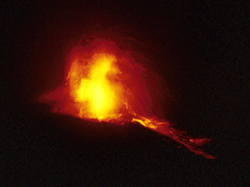 |
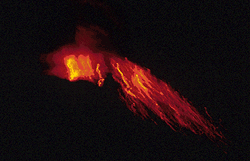 |
We climbed Acatenango with enough food for three days.
We are so excited watching Fuego that we stay on the volcano four days. The last day all we have to eat is one banana and one avocado. We are also running out of water. As we sit watching Fuego on our last night we wonder, where will we go next to see more of the worlds volcanoes? |
One of our favorite volcano sighting is during our World Bicycle Tour when we visit the island of Hawaii.
From the moment we see this eruption, we are determined to get a closer look! If you want to join us, click on Kilauea in Volcanoes National Park on the big island of Hawaii. |
 |
|
|
|
|
|
the World |
the Amazon |


